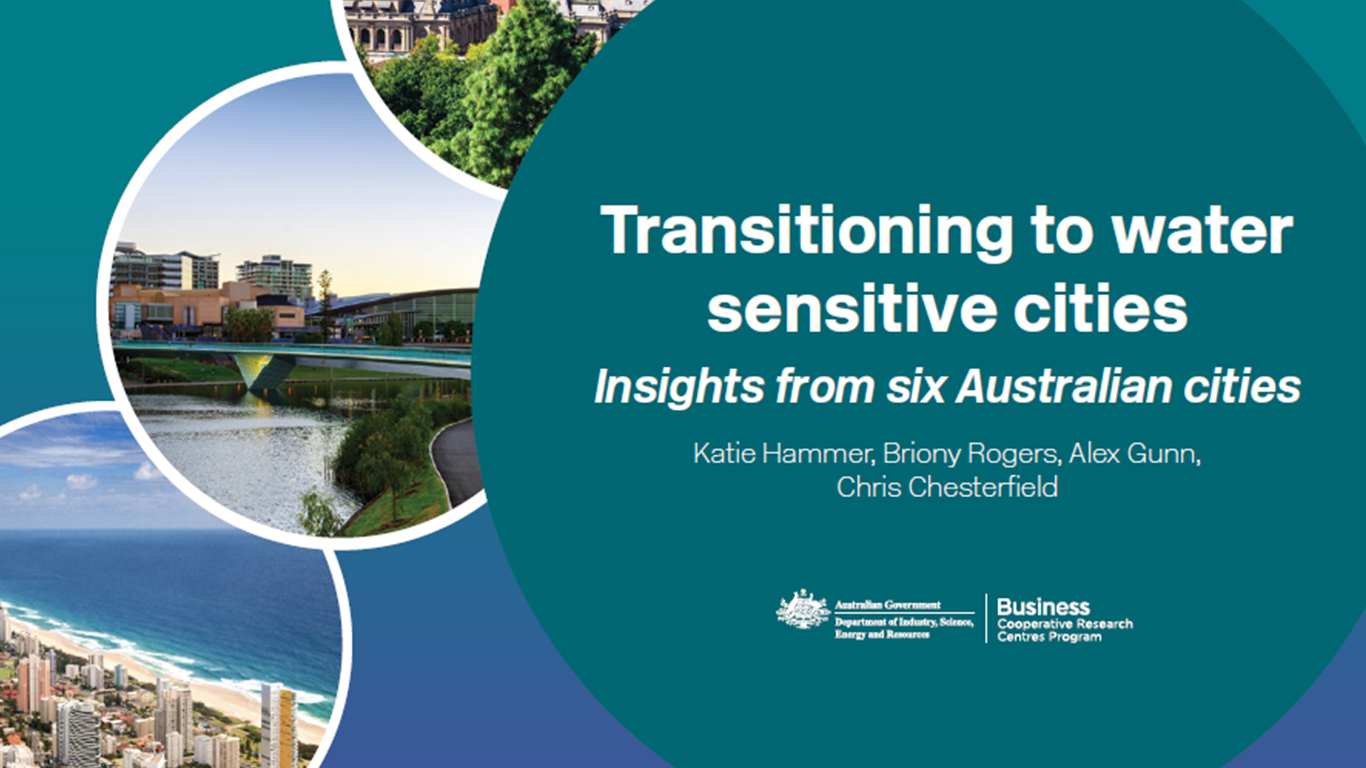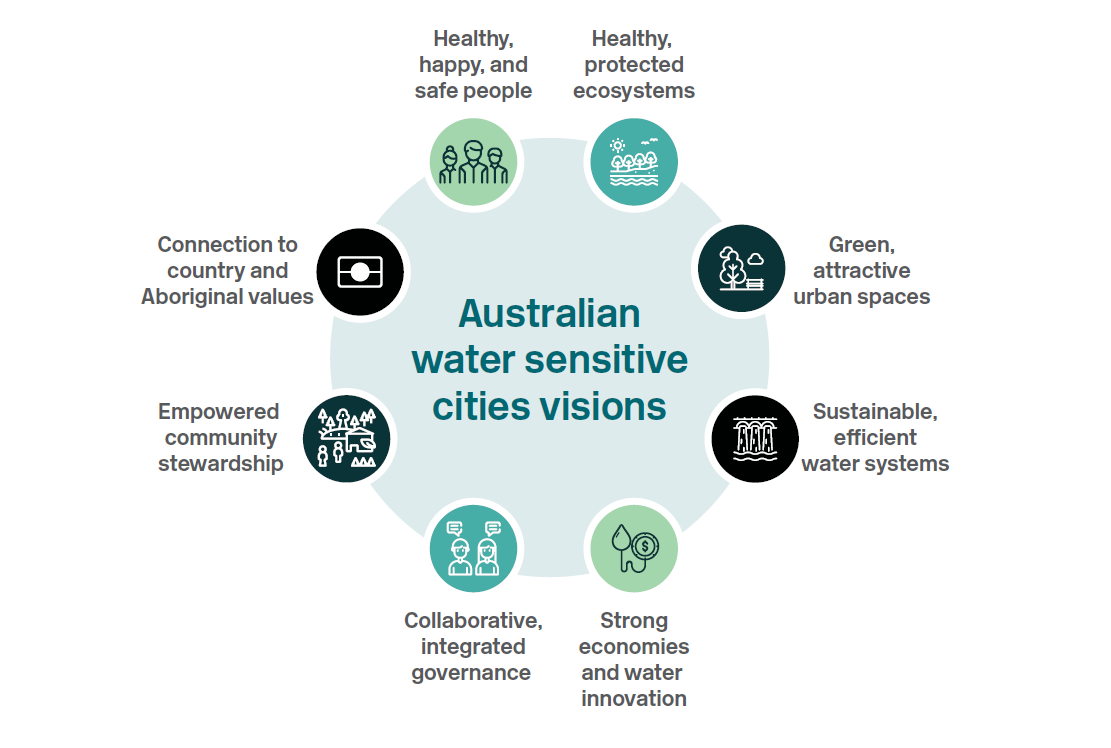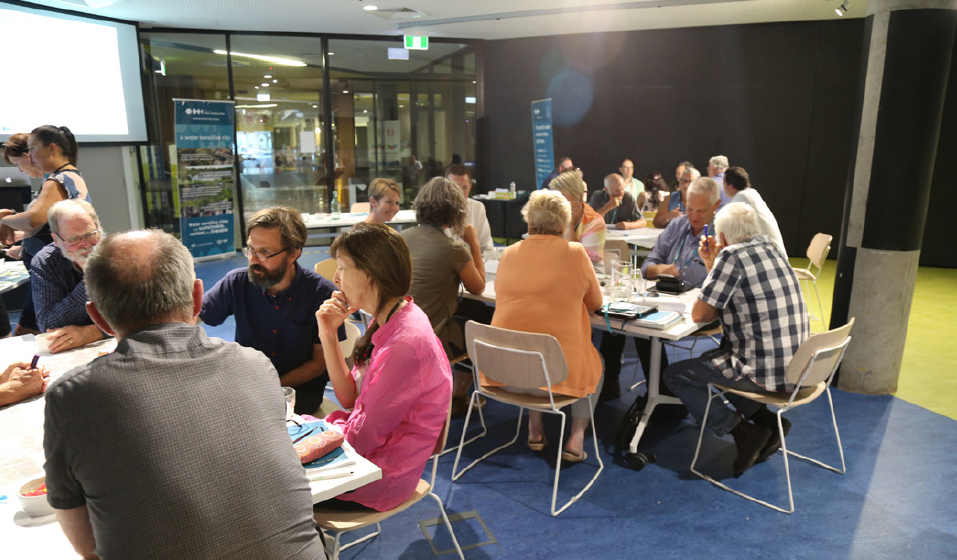Insights from six Australian cities’ WSC journeys
The CRC for Water Sensitive Cities’ first integrated research project (IRP1), Water sensitive city visions and transition strategies, delivered a suite of participatory methods and tools for guiding cities and towns in accelerating their water sensitive city (WSC) transitions.
The project involved transdisciplinary action research, drawing on insights from the scientific field of sustainability transitions and working with city stakeholders to develop visions and transition strategies for six case studies across Australia: Perth, Adelaide, Bendigo, Sydney, Townsville, and the Gold Coast.
Now the IRP1 team has released a report, comparing and contrasting these cities’ unique experiences and relationships with water, articulating their collective future aspirations, and identifying the strategic priorities for Australian cities to establish the conditions that will drive and enable the transformations needed to achieve their WSC vision.

A common Australian urban water story
A common story underpins the evolution of water management in different Australian cities as they have responded to national and international drivers, trends and events. It is important to understand this story and how it has shaped Australian water systems today, to identify opportunities for improvement going forward.
The six case study cities share some common drivers, trends and experiences:
- Aboriginal connection to country
- protecting public health
- post-war investment and population boom
- environmental focus
- policy and economic reform
- a drying climate.
More recently, ensuring ongoing resilience and liveability have been key drivers for water policy and practice, and have set the scene for implementing a more water sensitive approach.
Visions of Australian water sensitive cities
We helped each case study city to develop a water sensitive city vision, through collaborative workshop processes involving diverse stakeholders. Despite varied biophysical and social conditions, the cities articulated common themes about future water sensitive city aspirations for their city in 50 years:

In addition to the common themes across both urban water stories and future visions, each city had its own drivers, character and priorities that shaped unique city narratives:
- Perth has continued to experience a drying climate, leading to investment in water efficiency and supply options, while aspiring to be Australia’s leading waterwise (or water sensitive) city.
- Townsville, situated in the Dry Tropics of North Queensland and faced with cycles of extreme drought and flood, aims to embrace its dry tropical identity while enhancing liveability and protecting waterways and the Great Barrier Reef.
- Sydney aspires to achieve equity of water-related benefits across all parts of the city and to continue being an internationally recognised liveable city.
- The Gold Coast embraces the lifestyle benefits of water and aims to support the health of the canals and beaches for human health and recreation.
- Bendigo aspires to be a thriving inland city, supported by an empowered community and a strong connection to Country.
- Adelaide, with a strong history and culture of innovation, seeks to embrace the local ephemeral creeks and to continue to ensure water underpins a strong economy.
Australian transition priorities
Transitioning towards a water sensitive city will require significant changes across the structures, cultures and practices of urban and water system planning, design, management, engagement and decision making. These changes are likely to happen over a long timeframe as new water sensitive practices supplant old, unsustainable practices.
The CRCWSC’s Transition Dynamics Framework identifies six types of enabling factors that need to be present and sequentially built up, to successfully transition to a new practice:

We applied the framework to each case study city to assess the city’s current enabling conditions and identified strategies for progressing its transition to more water sensitive practice. Based on this assessment, we found some common transition priorities across the six case study cities (the report contains a comprehensive list):
- fostering influential champions, including community leaders and political leaders
- promoting the necessary collaboration platforms so that cities and agencies can share knowledge, costs and benefits to achieve shared aspirations
- pursuing the necessary knowledge and research on key areas such as engaging with Aboriginal water knowledge and values, quantifying WSC benefits, and emerging WSC technological innovations
- trialling and demonstrating WSC approaches on the ground to learn from experience and showcase innovation
- developing appropriate tools and guidance materials for both technical and social innovations
- ensuring an enabling policy and regulatory environment that supports WSC outcomes.

Towards implementation
The case study cities in our IRP1 research have taken many significant implementation steps. As cities and towns all over Australia consider their own water sensitive city priorities and actions, we have the opportunity to learn from each other’s successes and challenges. Together, we can accelerate Australia’s water sensitive transition. Download the report, Transitioning to water sensitive cities: insights from six Australian cities.
For more information, please contact Katie Hammer at katie.hammer@crcwsc.org.au.